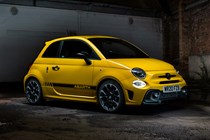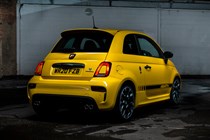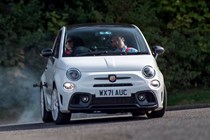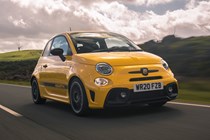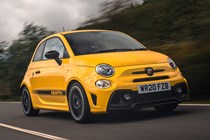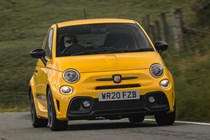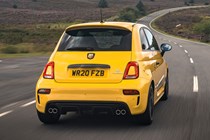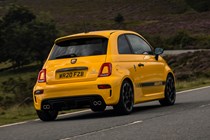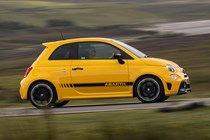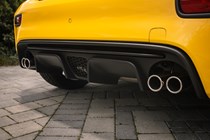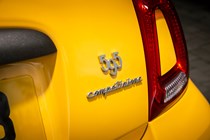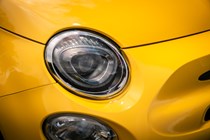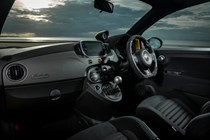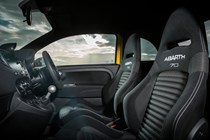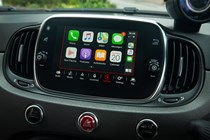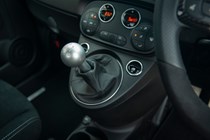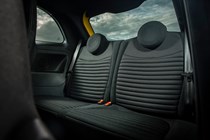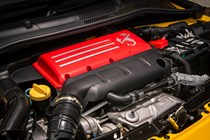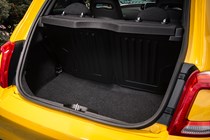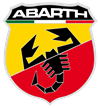
Abarth 595 engines, drive and performance
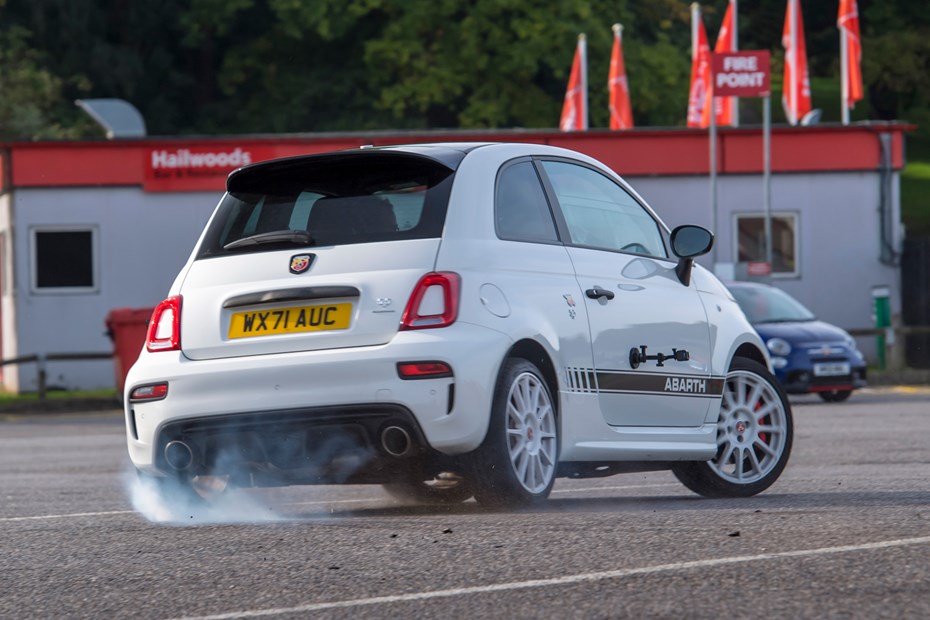
- Two engines – both hilarious fun
- 695 Competizione offers most thrills
- Stick with the standard manual gearbox
Petrol engines
Abarth’s hot hatchback comes with a choice of two powertrains, both based on the same turbocharged 1.4-litre four-cylinder unit. The most basic Abarth 595 produces 165hp and can accelerate from 0–62mph in 7.3 seconds, while the faster Abarth 695 variants develop 180hp and can dispatch the same sprint in 6.7 seconds.
Abarth’s 1.4-litre four-cylinder is an excitable little engine that’s great fun to work hard. It delivers its power in quite an old-fashioned way – the turbo lays dormant until around 3,000rpm, before cramming all its boost down the engine’s gullet in one go and launching you at the horizon. There’s a very satisfying parp from the exhaust as the turbo comes on song, too.
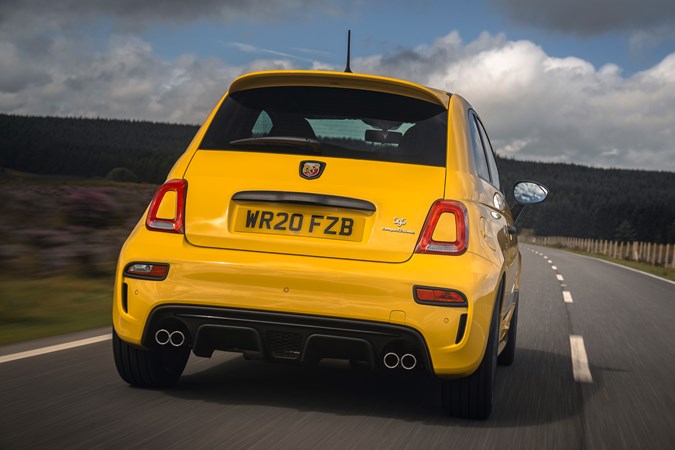
Even the flagship Abarth 695 isn’t as quick in a straight line as the Ford Fiesta ST, but it’s far more entertaining. Its turbo whistles like a cat-calling builder, its exhaust crackles like a firework and its steering wriggles around in your hands as the front wheels scrabble for grip. If you want an engaging, visceral driving experience, there’s little else at this price point that’ll serve you as well.
Both engines come with a five-speed manual gearbox as standard, which we strongly advise you keep. You can specify a five-speed automatic as an optional extra, but it isn’t worth the extra £1,350. It saps a lot of fun out of the experience.
What’s it like to drive?
Hilarious. It lacks the finesse of the Ford Fiesta ST and Hyundai i20 N, but there’s something intoxicating about its brutish attitude. The steering is sharp and transmits plenty of feedback from the road to the wheel. The suspension is well-judged, too, being firm enough to keep the car flat when cornering but soft enough to not batter your kidneys on the motorway.
Every Abarth feels nimble and darty on a B-road, especially with the upgraded suspension fitted to Competizione models. However, the car is always a little unsettled. It’s more difficult to adjust your line mid corner than it is in the Fiesta or the i20, while mid-corner bumps can make the chassis hop.
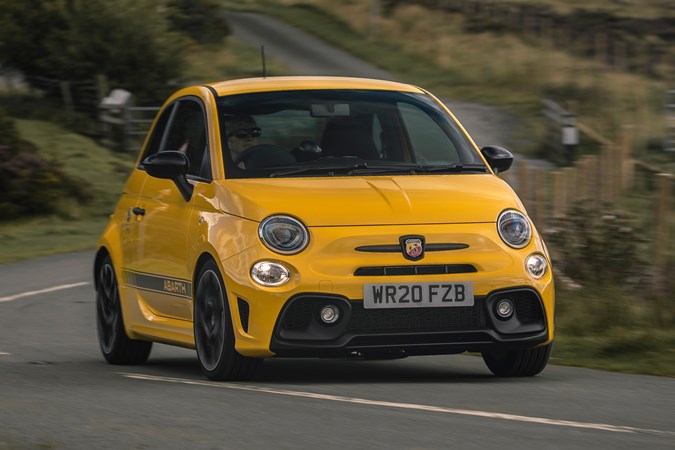
These sensations are amplified by the higher seating position, which means it takes some time behind the wheel before you really have the confidence to throw the Abarth around. Once you’re past that barrier, though, you’ll find it has loads of grip to offer.
Every Abarth also comes with a clever cornering gadget called Torque Transfer Control (TTC). Basically, it’s a rudimentary torque vectoring system that brakes the inside wheel through corners to tighten the car’s line and help the driver carry more speed through turns.
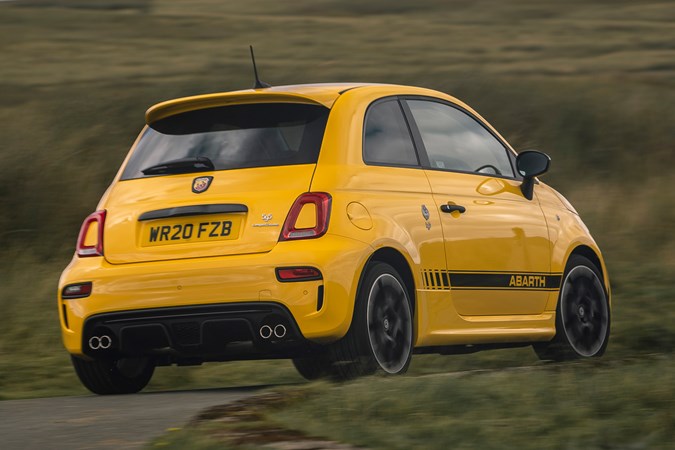
It works very well indeed but, like everything else about the Abarth driving experience, it’s rather thuggish in its delivery. If you’re a little too exuberant with the throttle, for example, you’ll spin both front wheels on your way out of a bend when the brakes release and allow all the engine’s torque to run rampant in the wheel arches. It’s enormous fun, but it’s also a sure-fire way to get your collar tugged by the local constabulary if you use it in the wrong place.
Competizione models come with a limited-slip differential. It’s a more effective, mechanical version of the TTC system fitted to lower-spec cars that improves cornering performance further. Be warned, though – you will need to fight the steering to keep the car heading straight when you apply power out of a corner because the differential will pull the car towards the wheel with the most grip.



